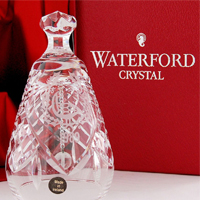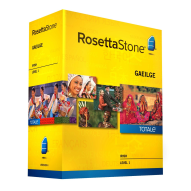History of The Irish Kilt
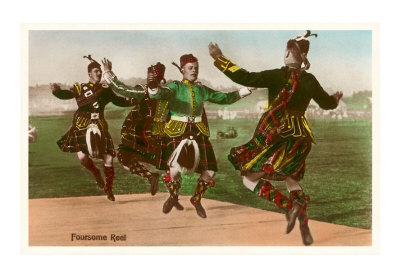 |
Four Highland Dancers in Kilts
|
Anachronism: An error in the chronological placement of persons, events, objects or customs.
The Irish kilt ... is this a traditional ancient garment? Is it a remnant of the early Celtic race? Was it only later brought into Scotland by migrating Gaels? Most of our assumptions are based on myth, legend and the anachronistic Hollywood film industry. They are infamous for using objects, customs and wardrobes that have no business being in some of the movies. For example, the costumer on the movie Braveheart didn't do much historical research by fitting Mel Gibson with a kilt. He was playing the role of a 13th century warrior, wearing a 17th century garment and painting a blue face from the 2nd century.
There is no evidence in early Irish records to support the theory that the kilt was invented in Ireland. Many stone carvings on crosses and monuments in Ireland, dating before the 11th century, claim that the figures are wearing kilts. This is inaccurate because what is actually pictured is called a leine, or Irish tunic. The leine may have a skirt reaching to the knee but it is simply the lower part of the tunic, not a separate garment as the kilt is. It is not related to the kilt in any way, nor can it be said to be an early one.
There is also some confusion about the garments worn by soldiers and knights. They were wearing quilted armor from the Middle Ages known as cotuns in Irish. They are long, heavy, quilted and padded tunics that serve as light armor. In ancient carvings, the quilting is depicted with vertical lines running down the tunic, which is often mistaken for pleating, and the knee length garments are often claimed to be kilts.
In the 16th century, again we find representations of Irish men that are supposed to be wearing kilts. There are depictions of many figures wearing garments with heavily pleated skirts. These are not modern kilts, but leines, which by this time had evolved into wrap around shirts with wide, hanging sleeves and elaborately pleated skirts.
Nowhere has good solid evidence been found to support the kilt being worn in Ireland. At the earliest, only since the middle of the 19th century, has it even been suggested that the kilt was worn in Ireland. Irish writers of the time never mention the wearing of the kilt at all.
Is the kilt a form of medieval dress? No. At renaissance fairs men may be seen in very modern kilts with what are sold as Jacobite shirts, but these people are simply believing what they have been taught by the poorly researched myths that pass for Scottish history. The earliest documentation for Scotland is from 1093. In the Magnus Berfaet saga, King Magnus goes to the western isles of Scotland and adopts the garments worn there, referred to as 'barelegged men'. Wishing to prove the early existence of a kilt, people usually cite this document but a kilt is never mentioned. Just because of the fact that these men went barelegged, the assumption was made that they must have been wearing a kilt. However, the clothing that is mentioned corresponds with the contemporary dress of the Irish Gaels of the time, which was the leine.
In the 16th century, we begin to see a type of kilt called a feilidh-mhor (Gaelic for great wrap), a breacan-feile (tartan wrap), or simply a belted plaid; all considered to be the same garment. A plaid or 'plaide' is a length of heavy woolen fabric worn over the body like a shawl. It does not refer to the modern American word plaid, except that they were often of a tartan pattern, which is synonymous for plaid in America. This garment would be gathered into folds and belted around the body. The first reference to anything that may be taken as a belted plaid is not until as late as 1578. The clothing was made for use but mainly suited for war, not ornamentation. These were long, flowing garments capable of being neatly gathered up into folds but in no way can this be claimed as a form of the kilt.
In the 16th century they wore plaids of many colors. They preferred dark brown or natural colors, used not only for warmth but for camouflage. Since it refers to plaids and seems to indicate a tartan pattern, it is assumed that it is a kilt or belted plaid. By the description, it is not an Irish mode of dress, but was that of the Scots.
The earliest picture of a belted plaid comes from after 1600, from circa 1610. It depicts a length of wool or a linen-wool blend, most often of tartan pattern of between four and five yards. However, since the material of the time was only about 25 inches wide, it would have to have been doubled in width to reach from the head to the knees. Most likely, eight or nine yards would have been obtained. This corresponds with the earliest surviving tailored kilts we have, which all contain about four yards of cloth.
There are no written instructions on how it was put on. According to depictions of the era, they began by laying the cloth out on the ground, then gathered the center part of the plaid into folds or pleats. The goal was to reduce the four or five yards of material to about one and one-half times the waist measurement. Precision was not needed when folding it. They lied down on the plaid parallel to the pleats, with the lower edge near the knees, then wrapped the two unpleated ends around the waist, overlapping them left over right. Using a sturdy leather belt, they ran it around the waist and fastened it tightly. Then they would stand up and arrange the remainder of material around the upper body, such as pulling around behind the back and tucking it into the belt at the base of the spine. There were most likely other personal preferences on how to wear the belted plaid.
The predecessor of the modern kilt was called the feilidh-beag (little wrap). The word in English is 'phillabeg' which was the natural evolution of the belted plaid, consisting of only the bottom or 'skirt'. The first instance of the pleats being sewn into place was in 1792, creating a true tailored kilt. This kilt is in possession of the Scottish Tartans Society and is currently on display at the Scottish Tartans Museum in Franklin, North Carolina.
The Tartan
 |
Tartan Cloth, Macnaughtons Emporium, Pitlochry, Scotland, United Kingdom
|
A discussion on the history of the kilt must contain the history of the tartan. Where did it come from and what does it mean? Tartan is derived from the French word 'tiretaine', meaning a linsey-woolsey fabric, but does not pertain to the pattern or design of it. Sometime in the 16th century, the word first appeared in Scotland and was probably adopted because the French and Scottish were linked by the blood lines of the dynasties. The Gaelic word for tartan is 'breacan'. The Scottish word 'plaide' refers to the large wrap garment worn from the late 16th century to the late 18th century. This is confusing according to what Americans know about kilts and tartans. The specific pattern of interlocking stripes has been adopted in America as plaid, meaning tartan. Previous to the 16th century, this wool-blend fabric would have been any color that could be obtained with the natural dyes of the location where it was made. Clans and families simply did not have any identifying tartans in this early period.
Starting here, the word tartan is meant as the fabric with interlocking stripes. The earliest evidence of tartan plaid in Scotland was called Falkirk Tartan, named for the town where it was discovered. It was a simple dark and light check, also known as 'shepherd's plaid', dating to 325 A.D., but it is not the earliest known tartan in history. Tartan patterned cloth could be found nearly anywhere a culture had the technology to weave. Archaeologists have found people wearing tartan patterned clothing that dates to over 5000 years ago. This is not proof that clan tartans are prehistoric but that the material was being produced by ancient weavers.
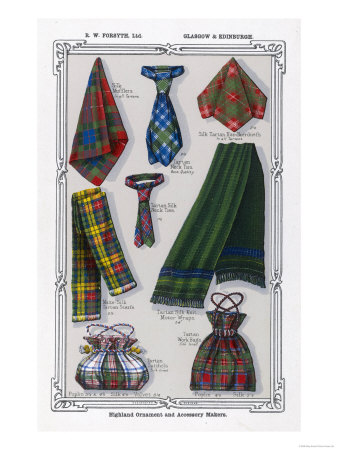 |
Tartan Accessories 1902
|
Tartan was originally worn in 16th century Scotland as fashionable attire. All tartan was hand woven and each weaver created unique and attractive designs based on the dyes available. Some colors may have been more common in one area than another but nothing approaching modern clan tartans would have existed. Tartan weavers were artisans who crafted a variety of tartan designs.
By the 18th century, tartan fashion had become outstanding. Surviving fabric from this period includes yellows, purples, golds, greens, oranges, reds, blues and any number of other bright colors, woven in even more intricate patterns. Later, after the massacre at Culloden, tartan dress, bagpipes and anything of Gaelic Scottishness was forbidden. This practice was also followed in Gaelic Ireland. It was not until after the clan system was broken, and this act was repealed 32 years later, that the idea of clan tartans really began to form.
The first standardized tartans were woven by William Wilson, owner of William Wilson & Sons woolen mill of Bannockburn. Wilson was the first commercial producer of tartan material. Using his new mechanical looms, he could repeat the same pattern of tartan over and over again without fail. The patterns were known by number but it was not long before names were attached. Wilson assigned them names of romantic localities or popular ruling families. The 19th century was a time of romance and tradition so it was a brilliant job of salesmanship on the part of Mr. Wilson. Sir Walter Scott added to Scotland's romantic appeal and soon tartan was the rage in England. Everyone of Scottish descent wanted to wear their own clan tartan. Queen Victoria loved all things Scottish and insisted that all Scotsmen wear their clan tartan while visiting her.
Even though this system of clan tartans was relatively new in the 19th century, the myth already existed that it was an ancient tradition. Soon, so-called 'experts' began to travel the country placing people into this clan or that, and telling them what their 'ancient and traditional' clan tartan was. Because of this practice, some people feel discouraged but it does not change the fact that today many Scottish clans, families, towns, businesses and districts are validly represented with a particular tartan. Tartan is as much a part of Scottish tradition as anything else but the historical garment known as the belted plaid predates the standardization of the clan tartan.
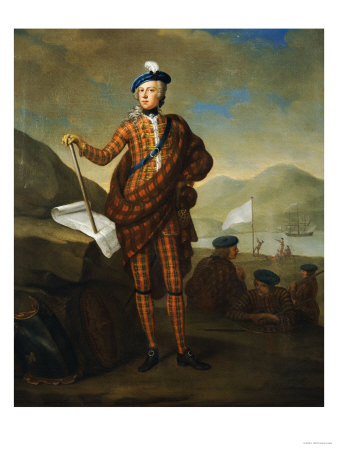 |
Harlequin Portrait of Prince Charles Edward Stewart (1720-1788), in Red Tartan Coat, Breeches
|
Disclaimer: LittleShamrocks.com is an affiliate website that receives commissions from sales of the products listed. We have purchased and sampled many, but not all, of the products on these pages.
© Copyright LittleShamrocks.com. All Rights Reserved.



